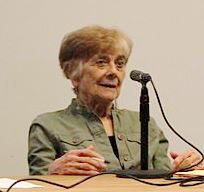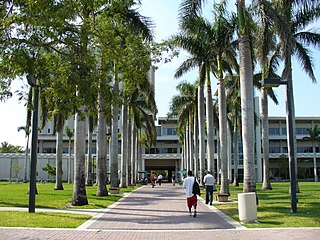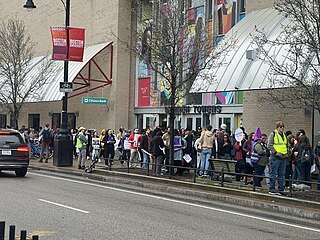The United Food and Commercial Workers International Union (UFCW) is a labor union representing approximately 1.3 million workers in the United States and Canada in industries including retail; meatpacking, food processing and manufacturing; hospitality; agriculture; cannabis; chemical trades; security; textile, and health care. UFCW is affiliated with the Canadian Labour Congress (CLC) and the AFL–CIO; it disaffiliated from the AFL–CIO in 2005 but reaffiliated in 2013. UFCW is also affiliated to UNI Global Union and the IUF.
John Robert Silber was an American academician and candidate for public office. From 1971 to 1996, he was President of Boston University (BU) and, from 1996 to 2002, Chancellor. From 2002 to 2003, he again served as President ; and, from 2003 until his death, he held the title of President Emeritus.
The Animation Guild, IATSE Local 839, also known as The Animation Guild, or TAG is a professional guild and union of animation artists, writers and technicians. The full name of the organization is The Animation Guild and Affiliated Optical Electronic and Graphic Arts, Local 839 of the International Alliance of Theatrical Stage Employees and Moving Picture Technicians, Artists and Allied Crafts of the United States, its Territories and Canada, American Federation of Labor-Congress of Industrial Organizations/Canadian Labour Congress.
The Federation of Hospital And University Employees is a coalition of labor unions in New Haven, Connecticut, United States, which represents thousands of workers at Yale University and Yale New Haven Hospital. The federation currently includes recognized unions UNITE HERE Locals 34 and 35, which represent university food service, maintenance, and custodial workers, and clerical and technical workers, respectively. UNITE HERE has also, for the last fifteen years, supported the organizing efforts of graduate student teachers and researchers in the Graduate Employees and Students Organization. Finally, the Federation also includes the 150 dietary workers at Yale New Haven Hospital who are members of Local 1199NE of the Service Employees International Union (SEIU). Since 1998, this union has conducted an organizing campaign of about 1,800 other blue-collar service workers at the hospital. On March 22, 2006, the union and hospital agreed to an agreement governing the conduct of both parties in a neutral election process by which hospital employees will be able to vote on whether to unionize.

Graduate student employee unionization, or academic student employee unionization, refers to labor unions that represent students who are employed by their college or university to teach classes, conduct research and perform clerical duties. As of 2014, there were at least 33 US graduate employee unions, 18 unrecognized unions in the United States, and 23 graduate employee unions in Canada. By 2019, it is estimated that there were 83,050 unionized student employees in certified bargaining units in the United States. As of 2023, there were at least 156 US graduate student employee unions and 23 graduate student employee unions in Canada.

Frances Fox Piven is an American professor of political science and sociology at the Graduate Center of the City University of New York, where she has taught since 1982.
Murray Burton Levin (1927–1999) was a political science professor at Boston University from 1955 through his retirement in 1989. A progressive who once had been a member of the Communist Party USA, Levin was an unreconstructed radical throughout his academic career. In addition to teaching a popular core course on political science, Levin specialized in teaching Marxist political theory to both undergraduate and graduate students. Long before the collapse of the Soviet Union, Levin eventually came to the conclusion that Marxist theory was not a science, let alone a viable system of economics, but was a powerful propaganda tool to mobilize the masses against capital. Class consciousness would be obtained ultimately when the masses finally revolted against the oligarchy.
Israel Kugler was a noted American professor of sociology. In the 1960s, he helped organize faculty at a number of New York City-area colleges and universities into labor unions. He co-founded the Professional Staff Congress, a union of faculty at the City University of New York (CUNY) which now represents more than 20,000 faculty and staff members at the university.
The St. John's University strike of 1966–1967 was a strike by faculty at St. John's University in New York City which began on January 4, 1966, and ended in June 1967. The strike began after 31 faculty members were dismissed in the fall of 1965 without due process, dismissals which some felt were a violation of the professors' academic freedom. The strike ended without any re-instatements, but led to the widespread unionization of public college faculty in the New York City area.

The University of Miami Justice for Janitors campaign was a nine-week strike by custodial workers at the University of Miami in Coral Gables, Florida, which lasted from February 28, 2006 to May 3, 2006.
The Harvard Graduate Students Union (HGSU), officially known as Harvard Graduate Students Union United Auto Workers (HGSU-UAW), is a labor union representing graduate students, teaching assistants, and other student employees at Harvard University. The bargaining unit comprises about 5,000 student employees, including graduate students working as research assistants and teaching fellows as well as several hundred undergraduate students holding teaching positions. Contract negotiations with the university are scheduled to begin in Fall 2018. HGSU is affiliated with the United Auto Workers labor union, whose 400,000 members include 45,000 graduate students and 30,000 academic workers.
The Wright State University 2019 faculty strike was an American strike organized by the Wright State chapter of the American Association of University Professors (AAUP) in response to employment conditions imposed by the university. The strike began on January 22, 2019, after nearly two years of failed contract negotiations between the AAUP and the Wright State University administration. The strike ended on February 10, 2019. At a length of twenty days, it was one of the longest faculty strikes in the history of U.S. higher education. University President Cheryl B. Schrader received widespread criticism for her handling of the strike and stepped down from her position as a result.
The 2021 St. Charles Bend strike was a labor strike involving technical workers at the St. Charles Medical Center – Bend in Bend, Oregon, United States. The strike was precipitated when, in 2019, the workers at the hospital unionized with the Oregon Federation of Nurses and Health Professionals. Following this, the union's bargaining unit began to negotiate a labor contract between the workers and the hospital, with several dozen negotiating meetings following over the next year. By December 2020, however, both sides were at an impasse, and in February 2021, the union filed a strike notice. Despite legal challenges by the hospital, the strike commenced on March 4. On March 13, both sides agreed to a proposal by a federal mediator, with workers to return to work while both sides continued to negotiate a contract, with a deadline of March 31. The strike officially ended on March 15 and workers returned to the hospital. A contract was eventually ratified between the union and hospital by the end of that month.
The 2021–2022 Columbia University strike was a labor strike involving graduate student workers at Columbia University in New York City. The strike began on March 15, 2021, and ended on May 13, 2021. However, additional strike action commenced on November 3 and lasted until January 7, 2022, when a tentative agreement with the university was reached. The strike was organized by the Graduate Workers of Columbia–United Auto Workers Local 2110 (SWC–UAW), a labor union representing student workers at the university. The goals of the strike were an increase in wages, increased healthcare and childcare coverage, and third-party arbitration in cases of discrimination and sexual harassment.
The 2021 Oregon Tech strike was a labor strike involving faculty members from the Oregon Institute of Technology. The strike was organized by the Oregon Tech - American Association of University Professors (OT-AAUP), a local union representing the faculty members that had been formed in 2018 and was recognized by the university in 2019. Following its recognition, the union and university entered into contract negotiations for the faculty members' first labor contract. However, negotiations proceeded slowly, and by early 2021, an agreement had not been reached. On March 17, both sides presented their final offers and the following month, union members voted to authorize strike action. On April 26, following a round of last-minute negotiations, the union officially commenced strike action.
The 2021 Virginia Volvo Trucks strike was a labor strike involving workers at a Volvo Trucks production facility in Dublin, Virginia, United States. The strike began in April and ended in July with the ratification of a new labor contract.
The 2016 Jim Beam strike was a labor strike involving about 250 workers for the Beam Suntory subsidiary of the Japanese alcohol company Suntory, which produces the Jim Beam brand of bourbon whiskey in the U.S. state of Kentucky. These workers, all union members of the United Food and Commercial Workers Local 111D, worked at two distillery facilities in Clermont and Boston, Kentucky. In 2016, this local union began to negotiate the terms of a new labor contract with the company, and although a tentative agreement had been reached by October 11, it was voted down by a ratio of about ten-to-one by the union members, who also authorized strike action. The primary concerns of the members involved included, among other issues, job security, scheduling, overtime, and the hiring of temporary workers in lieu of permanent, full-time employees. The contract negotiations came during a major boom period in bourbon production, and some workers at the distilleries reported having to work about 70 hours per week. Additionally, the number of temporary workers had increased drastically, and union members were seeking to have this number reduced and for the company to hire more permanent employees. While an updated contract proposal was voted on on October 14, it was similarly rejected by the union members, and with no replacement contract in place as the existing contract expired at midnight, the strike began the next day.

The 2023 Rutgers University strike was a labor strike involving faculty and graduate student workers at Rutgers University in New Jersey, United States. Academic workers at all four campuses—New Brunswick, Newark, Camden, and RBHS—participated in the bargaining action, affecting over 9,000 staff members and 67,000 students at the university. The strike began on April 10, 2023 following several months of failed negotiations between labor unions and Rutgers administration and was suspended on April 15, 2023.

The 2024 Boston University strike is an ongoing labor strike in Boston, Massachusetts by graduate student and residential life workers at Boston University. The strike began on March 25, 2024, and was organized by the Boston University Graduate Workers Union (BUGWU) labor union, which is affiliated with the Service Employees International Union Local 509. A second concurrent strike by the Boston University Residence Life Union labor union, also affiliated with SEIU 509, began on April 12, 2024, set to last four days.






